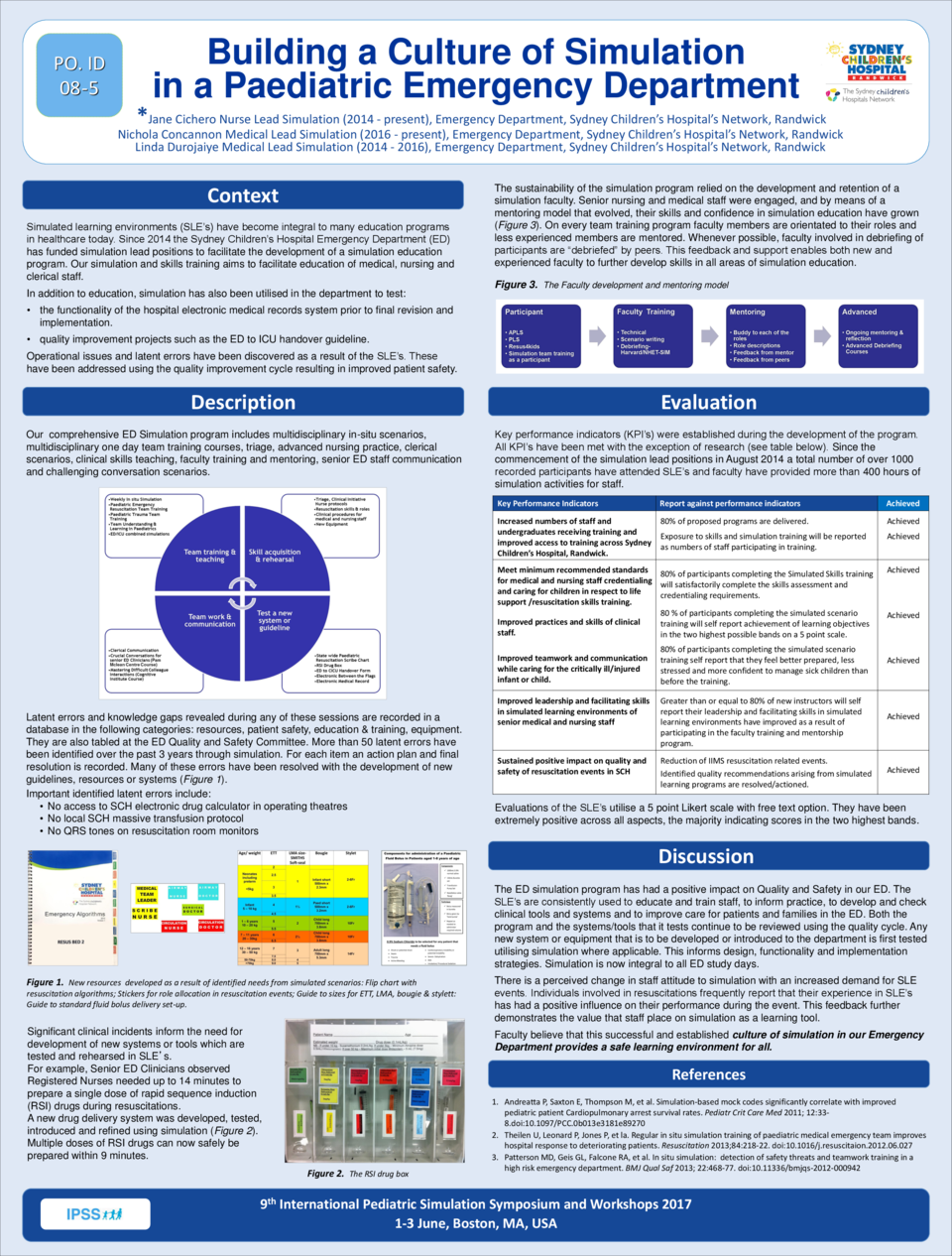Abstract
Context:
Simulated learning environments (SLE’s) have become integral to many education programs in healthcare today. Since 2014 the Sydney Children’s Hospital Emergency Department (ED) has supported nursing and medical simulation lead positions to facilitate the development of a simulation education program to support learning in the ED and inform practice.
Simulation and skills training cover areas that span from the care of critically ill or injured children, triage and advanced nursing practice, challenging conversations, communication and leadership.
Operational issues and latent errors have been discovered as a result of the SLE’s. This has led to improved patient safety through the quality improvement cycle by addressing and resolving latent errors and operational issues.
Description:
Our comprehensive ED Simulation program includes multidisciplinary in-situ scenarios, multidisciplinary one day team training courses, triage, advanced nursing practice and clerical scenarios, clinical skills teaching, faculty training and mentoring, and senior ED staff communication and challenging conversation scenarios.
Latent errors and knowledge gaps revealed during any of these sessions are recorded in a database and tabled at the ED Quality and Safety Committee. In addition, any significant clinical incidents inform the development of new systems or tools which are tested and rehearsed in SLE’s.
Evaluation:
Evaluations utilise a 5 point likert scale with free text option have been extremely positive across all aspects, the majority indicating scores in the two highest bands.
Defined quality data has been measured and include a reduction in reported clinical incidents in medication errors during resuscitation and reduced time taken to prepare rapid sequence induction medications.
Patient safety initiatives have been developed e.g. access for theatre staff to the electronic resuscitation drug calculator, development of a massive transfusion protocol.
Faculty training and a mentoring model has widened the pool of skilled simulation educators resulting in a sustainable workforce to support a culture of simulation in ED.
Discussion:
The ED simulation program has provided a positive impact on the culture and safety in our ED. The SLE’s are consistently used to inform practice, develop and check clinical tools and systems and improve care for patients and families in the ED. Ongoing feedback through the quality cycle continues, further improving and refining these tools/systems.
After two years there is a perceived difference in staff attitude to simulation, with regular requests for inclusion in future SLE events, a testament to the value staff now place on this type of learning, demonstrating that faculty have been successful in creating a safe learning environment for all.





